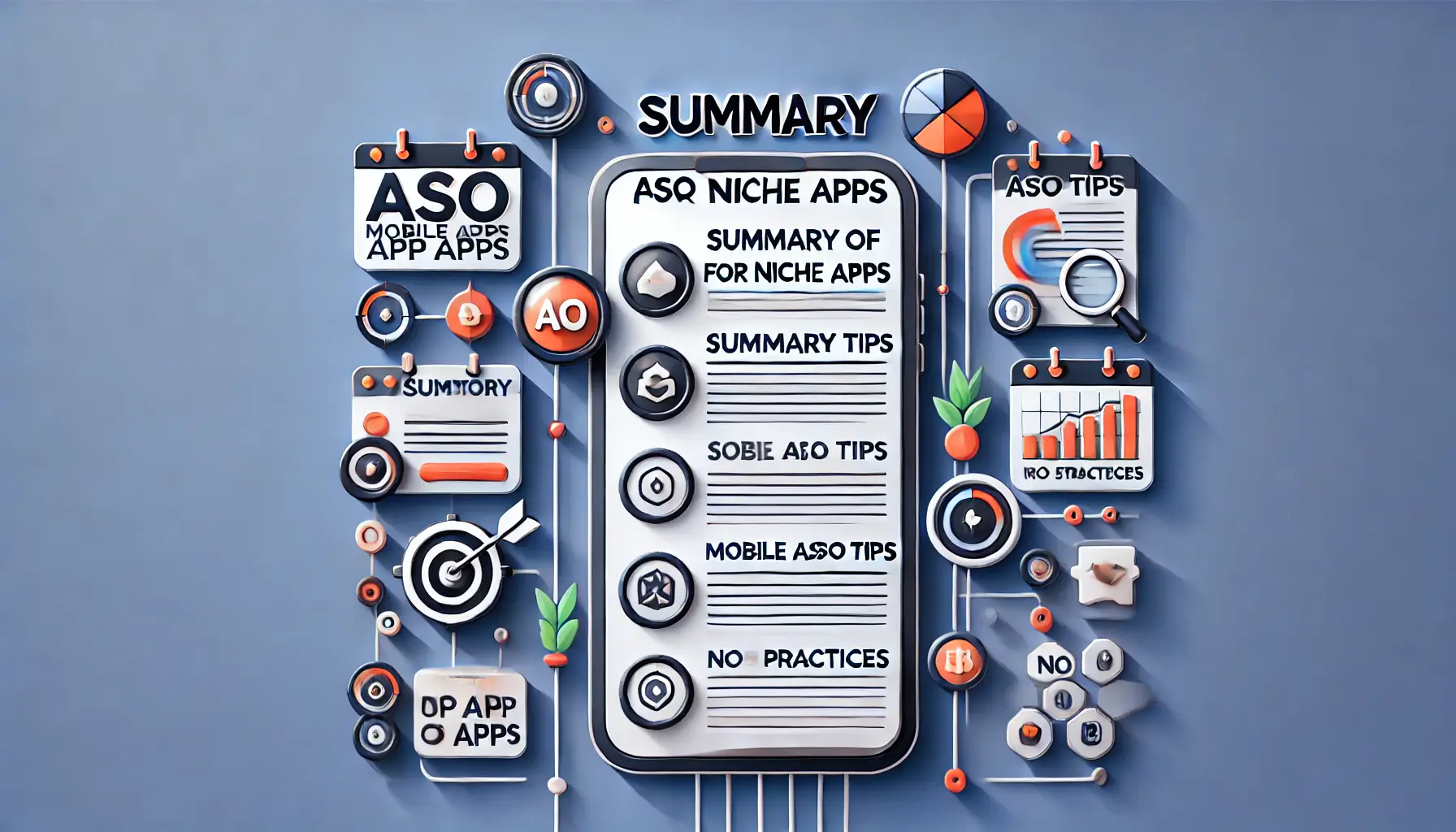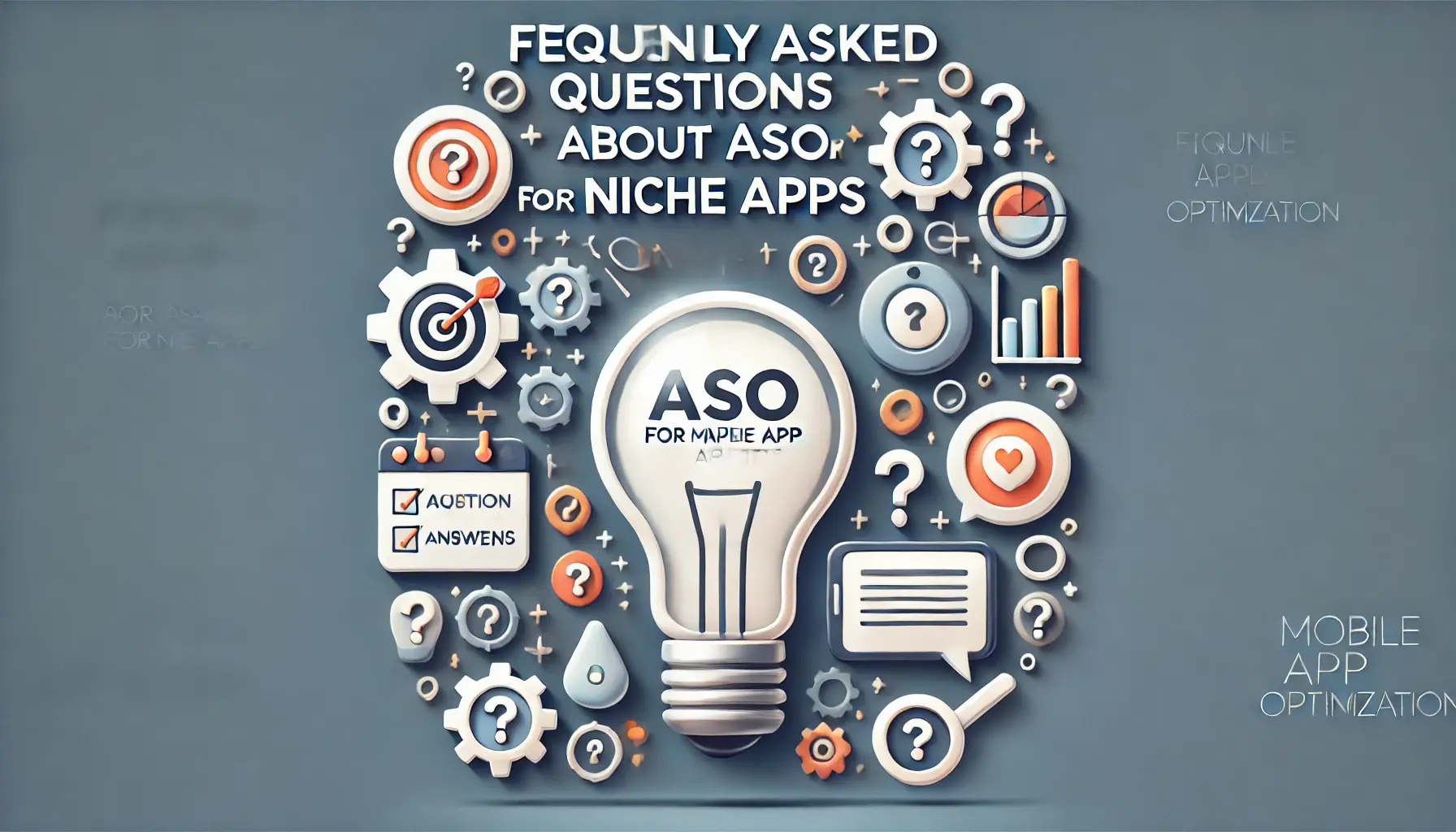In the changing world of mobile apps, discovering your place can be both a challenge and an opportunity.
Well, nicheA specialized segment of the market for a particular kind of product or service. apps are on the safer side of all, as they can target a particular category (because competition is lesser) and win most installs.
But excelling in these niche markets requires more than just creating an awesome app — you also need to master ASOApp Store Optimization, the process of improving app visibility in app stores. (App Store Optimization) as a way of getting your niche apps in front of the right people.
In this write-up, we will guide you through various ASO strategies to help your niche app not only survive but thrive in the saturated application ecosystem.
- The Complexities of ASO for Niche Apps
- What Are Long-Tail Keywords And Broad Keywords?
- User Intent is an Asset for ASO
- Using Niche-Specific Keywords
- Relevance and Search Volume Balanced
- Pointing Out Special Qualities and Advantages
- Crafting Messages for Target Audiences
- Enhancing Discoverability with Persuasive Words
- Optimizing for App Store SEO
- Encouraging Positive Responses from Your Loyal Customers
- Responding to Niche Pain Points
- Ways to Handle and Enhance App Ratings
- Important Stats to Keep an Eye On for Niche Apps
- Examining ASO’s Ongoing Performance
- Tailoring Your Strategy Based on Data Insights
- Conclusion: Mastering ASO for Niche Apps to Achieve Sustainable Growth
- Frequently Asked Questions About ASO for Niche Apps
The Complexities of ASO for Niche Apps
While both categories of apps—niche and general—have their own set of challenges, these are different from each other in relation to ASO.
The primary difficult aspect is that the search volume for niche keywords is generally quite low.
High volume search terms: Broader apps may have the benefit of more popular searches, while niche apps are forced to target specific keywords that fewer people might be using.
But at the same time, that means fewer competitors, and if you know how to leverage this, it can be beneficial for your niche app.

Visualizing market gaps and opportunities in the mobile app industry, focusing on strategic analysis and untapped potential.
Identifying Market Gaps and Opportunities
Born to be a niche app, the first prerequisite for successful work with ASO is identifying gaps in the market.
It means looking at other apps in the same vertical to see what they do, right and wrong.
With that information, you can then figure out where these gaps are and position your app as one that fills the unmet needs of your target market, delivering a unique point of difference.
- Do Your Research: Look into what else is out there in your niche market.
- Find Opportunities: Identify pockets where there is not a product fully serving core user needs.
- User Feedback: Look at user reviews and feedback for competitors’ apps to know shared pain points that can be solved.
Recognizing these gaps and opportunities will enable you to craft your ASO strategy for what sets your niche app apart, allowing it to be the solution that people are actively searching for because others do not offer.

Evaluating competition in niche markets through strategic analysis and identifying standout opportunities.
Assessing the Competition in Niche Markets
Analyzing the competition in a niche market is done differently compared to other, more general markets.
There are fewer direct competitors, often with a specialization and user expectations that are high.
To do that, you must know what the unique selling points of your competitors are and how they advertise their applications to their audience.
- Identify Competitors: Look for your primary rivals in the niche and learn how they are using ASO.
- Analyze ASO Strategies: Take a look at the keywords they are using, their app descriptions, and visual elements, as all of these resonate with what their audience would like to see.
- Understand User Base: Understand who they are targeting and how they interact with them.
With this information, you will be able to optimize your ASO better for the target audience and apply a lot of emphasis on where your niche app is unique or superior compared to what already exists.

Navigating the challenges of keyword selection for niche apps in a complex and competitive market.
Problems in Making Keyword Choices for Niche Apps
Keywords are of paramount importance in any ASO strategy, but the stakes tend to be magnified for niche apps.
So the keywords need to be detailed enough to gain the attention of a specific audience, yet still general enough to pop up when anybody with an interest in this area searches for something.
This balance is tricky and relies on knowing your niche incredibly well as well as being very in-tune with how people search.
- Keyword Research: First, figure out some long-tail keywords related to your app’s niche.
- Low Competition Keywords: Use keyword research tools to get keywords that have less competition but still get a decent volume of searches.
- Use Niche Language: When adapting your copy, consider using jargon or language relevant to that niche.
By deploying the right keyword selection for your niche app, you essentially improve the chances of being listed higher in search results when people search for terms relevant to our keywords—hence allowing our niche app to be discovered even amidst cut-throat competition.
Balancing a keyword strategy for niche apps is crucial for success.
This is where creating a keyword strategy for niche apps needs to have the fine balance of being very specific but then having some search volume.
Where a broad app can target high-traffic keywords, niche apps have to go for more specific terms that are tied directly with their unique service offerings.
This focus allows the app to target its market even if search volume is low.
The trick to getting this piece of the ASO puzzle right is identifying keywords that are relevant and have a sizeable search volume.
Excelling in niche markets requires mastering ASO tailored to specific audiences, leveraging low-competition keywords, and positioning your app to fill unmet market needs.

Understanding the strategic differences between long-tail and broad keywords in ASO for mobile apps.
What Are Long-Tail Keywords And Broad Keywords?
For niche apps, one of the best tactics may be focusing on long-tail keywordsKeywords or key phrases that are more specific and usually longer than more commonly searched keywords..
The long tail refers to longer, more detailed phrases a potential user might type in a search engine or app storeA digital distribution platform for mobile apps. when they have narrowed down exactly what they are looking for.
Although broad keywordsKeywords that are more general and attract a wider audience. have higher search volumes, they have greater competition too; but long-tail keywords are less competitive and also help your niche app to get a better ranking in keyword searches.
For instance: Rather than going after the general keyword ‘fitness app,’ a niche fitness app could go for something like ‘fitness app for marathon runners’.
Pro: This grade of specificity reels in users who may be quicker to convert — they already know exactly what they need.
Recommendation: Try to use long-tail keywords in the title, description, or metadataData that provides information about other data, often used in app descriptions to improve ASO. of your app to improve how it ranks.
This does not mean you should do away with all broad keywords, but keep them minimal and ensure they complement your long-tail keyword strategy.
Long-tail keywords are less competitive and help niche apps achieve better rankings, while broad keywords have higher search volumes but also more competition.

Highlighting the precision of aligning with user intent as a crucial asset in App Store Optimization.
User Intent is an Asset for ASO
The importance of user intent cannot be overstated when deciding upon keywords for niche apps.
What it is: User intent is the purpose that a person has in mind when entering their search query.
Understanding this will help ensure that your app appears in front of the right set of users who are actually interested in what you provide.
- Investigate: Check search trends and queries typical to your niche market that users commonly search for.
- Type of Keywords Targeted: Focus on transactional keywords that target the lower part of the sales funnel where people know what they want.
- Optimization: Use those keywords in the description and promotion text of your app to reach this audience.
The more your app appears to someone who is looking for it, the higher the chances of increased conversions and receiving unfiltered feedback.
Understanding user intent is crucial for targeting the right audience with keywords that align with their search behavior, leading to higher conversion rates.

Emphasizing the importance of targeting specific keywords for niche markets in mobile app optimization.
Using Niche-Specific Keywords
If you have niche apps, they should include keywords that are specific to the niche market.
These are your app-specific keywords that apply to the needs and desires of only a portion of consumers, not applicable generally.
Using these niche-specific keywords will allow you to target a higher-quality user who is actively looking for the features or services your app provides.
- Industry Terms: Add terms, definitions, or buzzwords that people working in your industry would be familiar with.
- Localization: For niche apps that are applied within a particular geographic region, localizing your keywords can help boost visibility for users in the area.
- Evaluate: Test your keywords regularly and adjust as needed, based on performance metrics and user behavior changes.
By integrating niche-specific keywords, you will set your app apart from the competition and tailor it to a segment that is most likely to use it.

Achieving a balance between relevance and search volume in keyword strategy for mobile app optimization.
Relevance and Search Volume Balanced
The trickiest part of a keyword strategy for niche apps is determining the right balance between relevance and search volume.
Broad keywords are capable of attracting a lot of users; however, over time, they would get you fewer downloads than long-tail or niche-specific keywords because such phrases may not be exactly what the user is looking for.
Alternatively, if the keywords are too niche-specific, they may have a low search volume and will not make much difference at all.
- Keyword Research: Utilize keyword research tools that examine search volume and competition metrics for potential keywords.
- Check for Relevance: Make sure that the keywords you select are closely connected to your app’s features and how they solve user problems.
- Updates: Keep an eye on how your focus keywords are performing so you can adapt and modify them to retain a balance between relevancy and search volume.
By finding the right balance between relevance and search volume, you can form a keyword strategy that increases visibility while also making sure your app is discovered by users who are more likely to convert.
Writing a killer app description for need-based niches is crucial for successful ASO.
One of the most important elements in ASO is your app description.
The description must be more exacting and efficient for niche mobile apps so that the limited targeted audience can pay attention to your app with interest.
A good app description not only improves your visibility in search results but also helps convert visitors into users.
Let us help you understand how to write a good app description so it reaches your niche audience effectively.
Finding the right balance between relevance and search volume is key to creating a successful keyword strategy that enhances visibility and user engagement.

Identifying and emphasizing special qualities and advantages in mobile app optimization.
Pointing Out Special Qualities and Advantages
In your app description, the first thing you want to do is make it clear how different and desirable the features of your niche app are.
With niche apps, the more accurately your app serves a particular target audience, the more it sets you apart from other similar apps, so indicate what unique features your app offers.
Niche markets have users that want specific functionalities or solutions, so don’t hesitate to show how this requirement can be addressed by your app.
- Emphasize Different Qualities: Delineate what distinguishes your app from the rest among similar niche apps.
- Benefits Oriented: Begin with your app’s benefits and then detail the features that deliver those benefits.
- Audience-Centric Language: Employ language that appeals directly to the wants and needs of your niche audience.
The unique features and benefits should be communicated in an easy-to-understand way that makes a great first impression to motivate users to download the app.
Emphasizing what sets your niche app apart and how it meets specific user needs can significantly boost its appeal in a specialized market.

Tailoring messages to effectively reach and engage specific target audiences in mobile app promotion.
Crafting Messages for Target Audiences
In the case of niche markets, your audience will likely have a more focused interest, so your messaging should be optimized to meet their specific needs.
While a generic description might work for broader markets, in a niche, you need to talk directly about how your app helps them with their specific challenges.
- Know Your Audience: Before you write, do research on your ideal users; learn what they need and want from a niche app.
- Persona-Driven Description: Tailor your description to match the language and preferences of your user persona.
- Direct Appeal: Speak directly to the user and use a tone that makes them feel like your app was designed specifically for their needs.
This approach makes your prospects feel understood, which in turn contributes positively to their likelihood of converting.

Leveraging the power of persuasive language to improve discoverability and engagement in mobile app promotion.
Enhancing Discoverability with Persuasive Words
Along the way, you will need to describe your app in a way that not only explains what it does but also why that is beneficial.
How you talk about your app could significantly influence a user’s decision to download it.
For niche apps—which have a smaller, more specific audience—language and perception can go a long way.
- Call to Action: Improve with simple, direct calls to action that encourage users to download (e.g., Download Now!).
- Define Your App’s Value Proposition: Clearly explain why users should install and use the app.
- Establish Trust: Use language that builds credibility, such as references to user testimonials or app store ratings.
Using persuasive language effectively can drive app promotion and step up user actions through your content.
Using persuasive language in app descriptions can drive downloads and improve discoverability, especially for niche apps with targeted audiences.

Enhancing app visibility and ranking through effective App Store SEO optimization.
Optimizing for App Store SEO
Like website SEO, ASO (App Store OptimizationA process aimed at increasing an app's visibility and ranking within an app store.) is critically important for niche apps.
If a niche market is already packed with other competitive alternatives, correctly inserting the right keywords in your app description will greatly increase its visibility in search results.
- Keyword Integration: Integrate relevant keywords in your app description effectively and organically, especially within the first couple of lines.
- Keeping It Readable: Of course, you want the description to include some keywords, but it still has to be readable and flow properly.
- Strategic Placement: Include keywords in the App Title, Subtitle, and the first few lines of the description to significantly impact your app ranking.
As with your app title, you should also optimize the description of your mobile application for SEO to increase discoverability and ensure that users searching for apps like yours can find it within relevant searches.
Using High Volume ASO Reviews and Ratings for Niche Apps
For some of the most useful niche apps, user reviews and ratings can be imperative to longevity and successful ASO.
In a specialized market where the audience is smaller, positive reviews (or negative ones) can make or break the decision for potential users to download your app.
By using user feedback to your advantage, you can strengthen the credibility of your niche app, improve its ranking in search results, and ultimately drive more downloads.
Here’s how you can efficiently leverage user reviews and ratings in your niche app’s ASO strategy.
Integrating relevant keywords in app descriptions and strategically placing them in titles and subtitles can significantly impact your app’s ranking and visibility.

Fostering loyalty and positive feedback from your customer base to enhance engagement.
Encouraging Positive Responses from Your Loyal Customers
The happiest users of your app are the ones who will help it spread.
A small group of engaged, loyal users can take your niche app further than thousands of one-time installs.
Encouraging these users to leave positive reviews is crucial for building your app’s reputation.
- Prompt Reviews: Use in-app prompts to ask users for reviews after they have accomplished something significant in the app.
- Reward the Reviewer: Offer small rewards like in-app currency or percentage discounts to users who take the time to leave a review.
- User Engagement: Reply to reviews, thank users, and create a community of loyal users.
This approach will help spread goodwill about your app, making it more attractive to the next batch of prospective users.
Engaging with loyal users and encouraging positive reviews can help build a strong reputation for your niche app, driving more downloads and improving ASO performance.

Addressing and resolving specific customer pain points with empathy and support.
Responding to Niche Pain Points
In niche markets, users often have specific requirements and expectations that general apps might not meet.
When users voice concerns or point out problems in their reviews, it is essential to address these niche-specific issues promptly.
- The Power of Listening: Take note of what users are saying and how they want issues to be fixed (feedback loop).
- Offer to Help: When negative reviews are left, respond with resolutions or updates that show how your team is working to resolve the issues.
- Highlight Enhancements: As you release new versions that fix errors or add requested functionality, mention these updates in your responses to demonstrate how customer input is valued and acted upon.
Instead of focusing on who the pain point will affect, look for ways in your response to turn a negative into a positive and show true commitment to your niche audience.
Addressing user concerns and resolving niche-specific issues promptly can turn negative reviews into positive outcomes, enhancing your app’s reputation.

Actively managing and enhancing app ratings to improve user perception and app success.
Ways to Handle and Enhance App Ratings
App ratings remain a central factor for ASO.
Keep in mind that while your niche app might face less competition in its specific market, user expectations are often higher.
Good rating management can ensure that your app’s score remains high or even improves over time.
- Keep Track of Your Rating: Check your app rating regularly and watch for falling trends. If you see a dip, try to address the issue as soon as possible.
- Generate Positive Users: Encourage satisfied users to rate your app (ideally providing 5-star ratings) to balance out lower-rated reviews.
- Keep Your App Updated: Regular updates that improve functionality, fix bugs, and introduce new features can lead to better ratings, as users appreciate apps that are actively maintained.
By implementing these methods, you can develop your application to achieve the best ratings while staying competitive in niche markets.
How to Track & Measure ASO Success in Niche Markets
For App Store SEO success in niche markets, individual aspects will be more pronounced according to dynamic terms (keywords) determined by the target group and competition.
Growth for your niche app is necessary, and properly tracking and measuring the effectiveness of all ASO efforts is crucial.
There are more metrics to consider than I can mention here, which is why you need to focus on the right metrics and continuously refine your ASO strategy.
This approach will not only help you stay ahead of the competition but also ensure sustainable growth for your app.
In this post, we’ll look into how you can effectively monitor and measure your ASO success in niche markets.
Maintaining and improving app ratings is crucial for ASO success in niche markets, where user expectations are high, and competition is specialized.

Monitoring critical metrics to ensure the success of niche apps through effective analytics.
Important Stats to Keep an Eye On for Niche Apps
ASO success is as much about tracking the right metrics to give you an idea of how well your niche app performs in its marketplace.
These key metrics will help you gauge your ASO efforts and identify areas where significant improvements are needed.
- App Store Rankings: Track where your app ranks for the keywords crucial to its success in the App Stores. This provides an indicator of how discoverable your app is to potential users.
- Conversion Rate: Measure the percentage of users who take action on your app (e.g., download) after they visit its page. A high conversion rate indicates that your app’s description, screenshots, and reviews are resonating well with users.
- User Retention: Track how many users revisit your app over time. According to Apptentive research, if 60% of users return the day after download and continue returning by Day 30, your app has successfully retained its niche user segment.
These metrics will help you monitor not just the app store performance of your application but also provide actionable data insights to improve it.
Tracking key metrics such as app store rankings, conversion rates, and user retention is essential for measuring ASO success and optimizing your strategy for niche apps.

Ongoing evaluation and optimization of ASO performance to enhance app visibility and success.
Examining ASO’s Ongoing Performance
ASO is not a one-time job; it needs to be maintained and optimized regularly.
Analyzing your ASO performance over time helps you identify trends and understand what works so you can adjust your strategy accordingly.
- Trend Analysis: Identify trends in your app’s performance, such as changes in rankings, downloads, or user behavior. This can give you a sense of how your updates or changes have impacted your app’s performance.
- A/B Testing: Test different combinations of keywords, descriptions, and screenshots to find out which performs best in the app store. A/B testing is the ultimate tool for understanding what resonates with your niche audience.
- Competitor Review: Keep a check on your app’s performance by comparing it to similar apps in the market. This can help you find unique solutions for your app and attract users at any point in time.
If you keep track of your ASO performance over time, you will be able to make better-informed decisions that optimize results for the long term in whatever niche market you are participating in.

Refining and adapting strategies through data-driven insights for optimal app performance.
Tailoring Your Strategy Based on Data Insights
The information gathered from tracking and analyzing your ASO efforts should guide your strategy moving forward.
In niche markets, where user behavior and preferences can change quickly, you need to be nimble and ready to pivot fast.
- Optimizations Based on Performance and Key Metrics: Leverage insights from your key metrics and performance analysis to make data-driven changes that fit into your ASO strategy. This may include tweaking the keywords you target, refreshing your app description, or sharpening images.
- ASO Strategy: Include User Feedback
- Frequent Updates: Do not let your app age and go stale. Ensure continuous updates to keep the content fresh while also maintaining the undisputed king of ASO! This improves user experience and should, in theory, allow you to retain or potentially improve your app store rankings.
With insights into your data, you can adjust your strategy accordingly to ensure that users continue using and downloading your niche app in a market full of competition.
Leveraging data insights to optimize your ASO strategy ensures that your niche app remains competitive and relevant in its market.

Achieving long-term success and sustainable growth in ASO for niche apps through mastery and optimization.
Conclusion: Mastering ASO for Niche Apps to Achieve Sustainable Growth
As always, thank you so much for taking the time to read this article on mastering ASO in niche app marketing to reach long-term sustainable growth.
Finding and tapping into a niche market can be incredibly difficult in the saturated mobile apps space.
While having an app with unique characteristics is important, succeeding requires more than just that—it also calls for great App Store Optimization (ASO) targeted at what your specific audience needs.
In this article, you saw the importance of keyword selection, writing excellent app descriptions, and tips on how to use user reviews to your benefit, as well as performance metrics that really count.

Summarizing key ASO tips and strategies for optimizing niche apps in the mobile market.
Summary of ASO Tips for Niche Apps
- Be Specific: Niche apps thrive on specificity. Make sure that your keyword strategy is putting you in front of the right eyes by targeting ultra-specific long-tail keywords that fulfill a need for your niche market.
- Give Your App a Detailed Description: When writing the full, fleshed-out descriptions for all of an app’s features and benefits, ensure they compel the target audience. Using persuasive and optimized descriptions can take your listing from a 1% conversion rate to more like 4%.
- Feedback is Key: Niche markets rely heavily on good reviews and ratings. By interacting with your users, inviting feedback, and quickly resolving concerns, you can help ensure a positive reputation for your app.
- Monitor and Adapt: ASO is a process that never ends. To remain competitive and relevant to the needs of your niche app market, track key performance metrics regularly, analyze trends, and adapt your strategy accordingly.

Ensuring long-term success and maintaining competitiveness in the evolving mobile app market.
The Future: Growth That Holds and Staying Competitive
Just as apps continue to evolve, so too should your ASO strategy.
Even though there may be less competition in niche markets by definition, the standards of excellence are elevated, and user expectations are high.
In a niche market, your app can survive and excel by becoming agile and adaptable, constantly evolving to meet user behavior and changing scenarios.
Remember, the journey of ASO is never truly done.
It is something that must continually evolve, be mulled over, and amended.
No matter what kind of niche you pursue, if your app is good enough and attracts the right audience using these strategies, it will bring real value—correctly applied, this can create a long-term growth strategy.
In the end, to master ASO for a niche app, you need to know your market and connect closely with users by implementing best practices.
This is where the need for a proper ASO strategy comes in—and with one in place, your app can compete very well even in specialized markets, leading to growth and success over time.
Mastering ASO for niche apps involves continuous optimization, understanding your market, and connecting closely with users to achieve long-term growth and success.

Providing clarity and answers to common questions about ASO for niche apps.
Boost your mobile app's success with our guaranteed App Store Optimization (ASO) service. Leave it to the experts!
Frequently Asked Questions About ASO for Niche Apps
Here are some common questions and answers about mastering ASO for niche apps:
ASO, or App Store Optimization, is the process of improving your app’s visibility and ranking in app stores.
For niche apps, effective ASO helps target the right audience and drive more relevant downloads.
Start by researching specific terms related to your app’s features and target audience.
Use keyword tools and analyze competitors to find long-tail keywords with decent search volume and low competition.
User reviews significantly impact your app’s credibility and visibility.
Positive reviews can improve your app’s ranking and attract more users.
Engaging with feedback helps maintain a positive reputation.
ASO is an ongoing process.
Regularly review performance metrics, analyze trends, and update your strategy based on changes in user behavior and market conditions to stay competitive.
Long-tail keywords are specific, longer phrases users type when searching for particular needs.
They have lower competition and higher conversion rates, making them ideal for targeting niche markets.
Highlight unique features and benefits specific to your niche audience.
Use clear, compelling language that addresses their needs and preferences to enhance engagement and drive conversions.
Track metrics like app store rankings, conversion rates, and user retention.
These indicators help assess the effectiveness of your ASO efforts and identify areas for improvement.
Yes, combining long-tail and broad keywords can be effective.
Use long-tail keywords for specificity and lower competition, while broad keywords can help capture a larger audience, but use them sparingly.
Address negative reviews promptly and professionally.
Offer solutions or updates to resolve issues, showing users that you value their feedback and are committed to improving the app.













